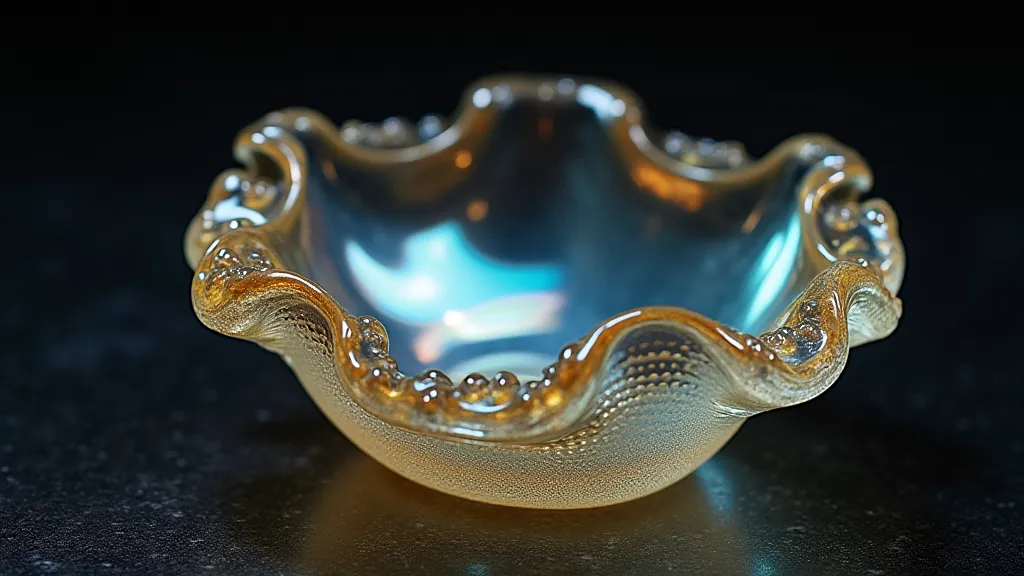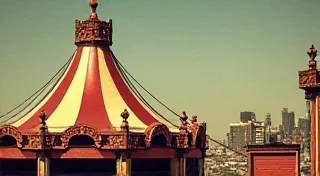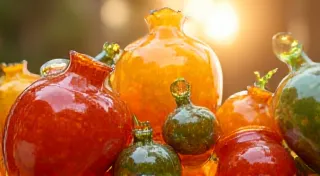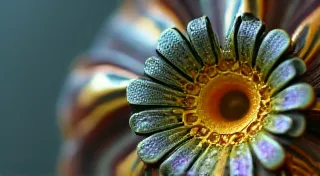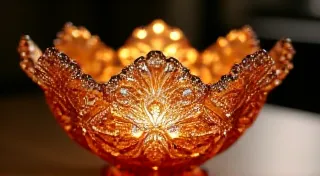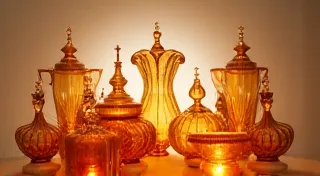Carnival Glass vs. Iridescent Glass: Spotting the Differences
The shimmering beauty of iridescent glass draws collectors in, but the terminology can be confusing. “Carnival glass” and “iridescent glass” are often used interchangeably, leading to misidentification and frustration. While all carnival glass is iridescent, not all iridescent glass is carnival glass. This article clarifies the differences and provides you with the knowledge to confidently identify these captivating pieces. Understanding the nuances between these types of glass can be a rewarding journey, especially for those just starting out; a beginner's guide to carnival glass provides a helpful overview of the basics.
What is Iridescent Glass?
Iridescent glass is simply glass that has a play of colors on its surface, giving it a rainbow-like appearance. This iridescence can arise from a few different processes. Some glass is deliberately coated with metallic oxides during manufacture, creating a lustrous finish. Other iridescence comes from weathering and age – a chemical reaction between the glass and the environment. The effect is visually stunning, resembling an oil slick or a soap bubble, and adds a unique character to any piece.
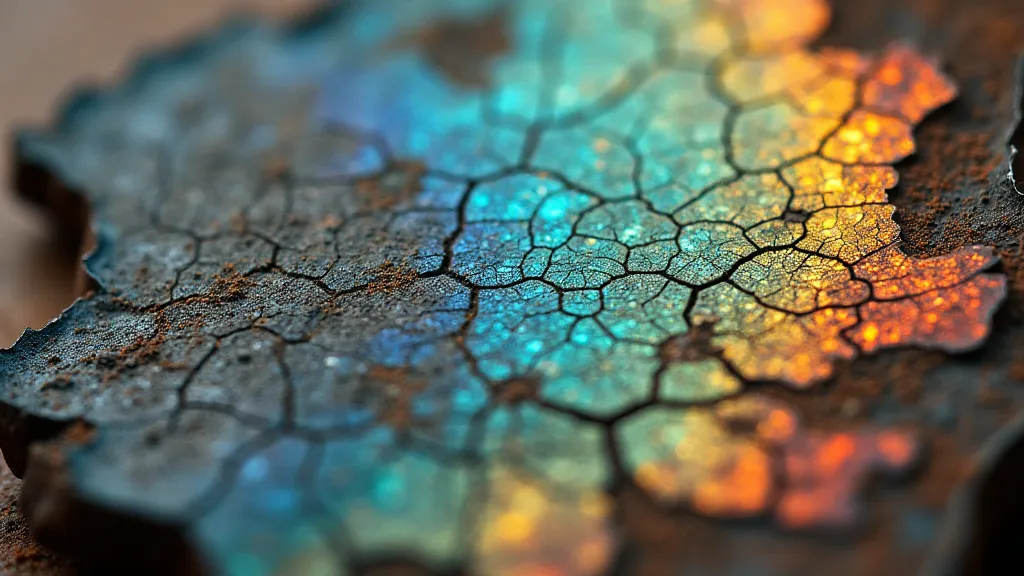
Introducing Carnival Glass: A Specific Type
Carnival glass is a *specific* type of iridescent glass that was primarily manufactured between 1903 and 1923, mostly in the United States and Europe. It was created to imitate more expensive art glass, offering a beautiful and accessible decorative option for the growing middle class of the time. The name "carnival glass" comes from its frequent use as prizes at carnivals and fairs, further contributing to its accessibility and appeal. The demand for affordable and attractive decorative items fueled its popularity during that era. Its connection to popular entertainment is a significant part of its history.
The iridescent effect in carnival glass is usually a result of a metallic oxide coating applied during the manufacturing process, typically a combination of iron, copper, and sometimes other metals. This coating creates the distinctive, swirling colors seen on carnival glass pieces. The specific blend of metals and the application technique significantly impact the final appearance, leading to a wide variety of color combinations and patterns. Factors such as the application thickness and temperature during firing can dramatically alter the final iridescent effect. Different factories even developed proprietary methods, adding to the diversity within carnival glass.
Key Differences: Carnival Glass vs. Other Iridescent Glass
So, how can you tell the difference? Here's a breakdown of the key distinctions:
- Age & Production Period: Carnival glass is generally dated between 1903 and 1923. If a piece is significantly older or younger, it’s highly unlikely to be carnival glass. While this timeframe is a reliable indicator, it's important to note that variations and later reproductions exist, further complicating identification. Reproductions often lack the characteristic fire-opal iridescent effect seen in genuine carnival glass.
- Manufacturing Process: While both are iridescent, the *way* the iridescence is achieved differs. Carnival glass's iridescence is from a specific applied metallic oxide coating. Other iridescent glass might have iridescence achieved by different methods or natural weathering. The process used to create the iridescence can dramatically impact the appearance and value of the glass. Understanding the science behind the iridescent coatings is crucial for serious collectors.
- Design & Patterns: Carnival glass is known for its specific, recurring patterns. These include popular motifs like "Feather," "Comb," "Seafoam," and many others. While there are some crossovers with other glass types, these patterns are most commonly associated with carnival glass. Recognizing these patterns is a crucial skill for collectors. For those wanting a deeper dive into the colors and patterns, a collector's guide to carnival glass colors provides a visual reference. The consistent motifs and recurring patterns distinguish carnival glass from more experimental or artistic glass pieces.
- Base Glass Color: Carnival glass is commonly made with a range of base glass colors, including vaseline (yellow), amethyst, blue, green, and peach. While other iridescent glass can be found in various colors, the prevalence of these colors in carnival glass is a helpful identifier. The interplay of the base color and the metallic coating creates the unique visual effect characteristic of carnival glass. The rarity of certain base colors, like ruby stain, further elevates the value and desirability of carnival glass pieces.
- Surface Texture: Carnival glass often has a slightly rougher surface texture compared to some other types of iridescent glass. This is due to the application of the metallic coating. This texture difference is subtle, but can be noticeable under close examination. Using magnification can help reveal these subtle variations in surface texture.
- Slag & Fire-Opal Effects: Beyond the standard iridescent coating, carnival glass is often prized for its "slag" and "fire-opal" effects. These characteristics, resulting from unique application and firing conditions, create a more intense and complex rainbow sheen. The beauty of these rare effects makes identifying them crucial for serious collectors.
The formation of "slag" – a milkier, more opaque iridescent effect – is another intriguing aspect often associated with carnival glass. Understanding this phenomenon can further aid in identification; information about the formation and beauty of carnival glass slag is invaluable for discerning collectors. The intensity and distribution of the slag can vary greatly, making each piece unique.
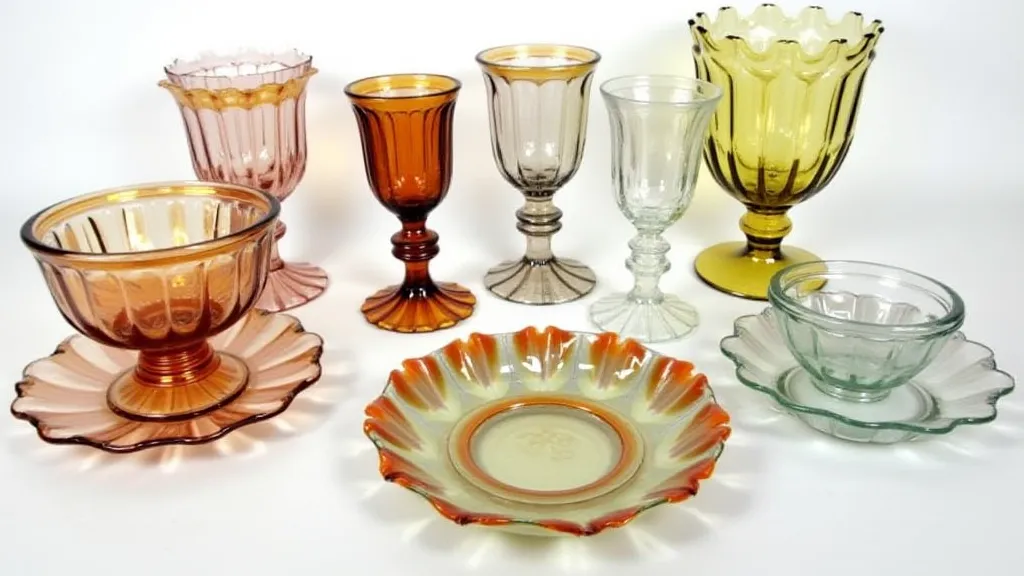
Beyond Carnival Glass: Other Iridescent Glass
It's important to remember that iridescent glass isn't limited to carnival glass. Several other types of glass exhibit iridescence:
- French Dessert Glass: These pieces, often dating from the 1920s-1930s, often have a more subtle, almost oil-slick-like iridescence. The thinner glass and different application techniques result in a softer, more diffused iridescent effect. The delicate nature of French dessert glass requires careful handling and storage.
- Art Glass: Some genuine art glass pieces incorporate iridescence as part of their design. The artistic intent behind using iridescence in art glass often goes beyond mere decoration, adding layers of meaning and complexity to the piece. These pieces often command high prices due to their artistic merit and rarity.
- Modern Iridescent Glass: Contemporary glass manufacturers often use iridization techniques to create visually appealing pieces. These techniques may involve different materials and processes compared to those used in vintage carnival glass, resulting in a distinct appearance. Understanding these modern techniques helps to differentiate them from the historic methods used in carnival glass production.
- Vaseline Glass: Related to carnival glass's common base colors, vaseline glass, known for its yellow-green hue, is often confused with carnival glass. While it can exhibit some iridescence, it lacks the distinctive metallic coating of carnival glass. Learning to distinguish vaseline glass from true carnival glass is an important skill for collectors.
Distinguishing between the various types requires patience, careful observation, and a willingness to learn. The value and collectibility of these pieces also varies considerably, influenced by factors like rarity, condition, and desirability. For those seeking to expand their knowledge, a deeper look into the best resources for carnival glass collectors is highly recommended. These resources can provide valuable insights into identification, history, and market trends.
Resources for Carnival Glass Enthusiasts
Building a successful collection of any type of glass requires access to reliable information and a supportive community. Numerous resources are available to help enthusiasts learn more about carnival glass, including books, websites, online forums, and collector organizations. Identifying reputable sources is essential for accurate information and a rewarding collecting experience. Knowing where to find information, both online and in person, is key; a guide to
Conclusion: Building Your Knowledge
Distinguishing between carnival glass and other iridescent glass takes practice and careful observation. By understanding the key differences outlined in this article, you're well on your way to accurately identifying and appreciating these beautiful pieces. Keep researching, examining examples, and enjoying the shimmering beauty of glass!
